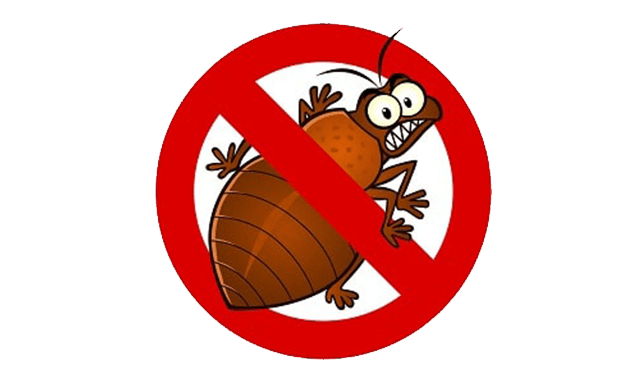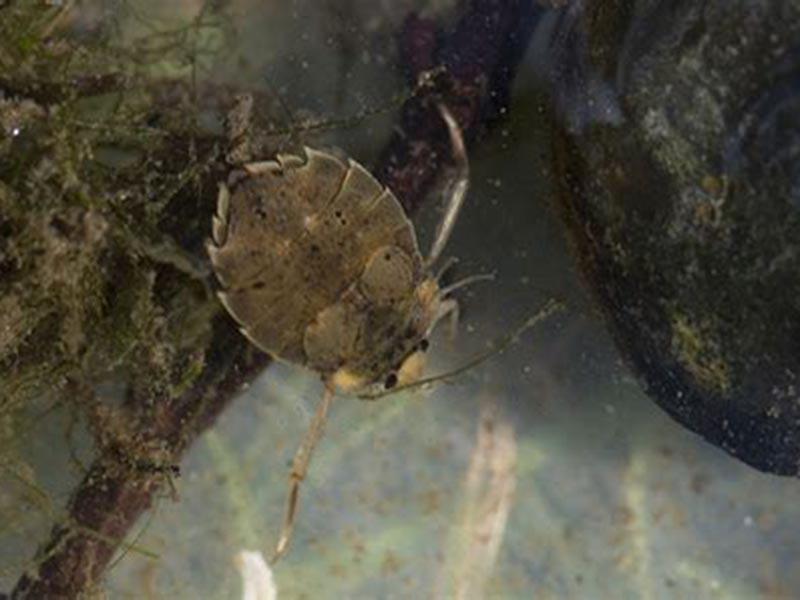
Теперь не знаю, что и делать. Ехать в больницу – несолидно как-то из-за одного укуса, тем более температуры у меня нет. Принимаю антигистаминное, мажу мазью с противозудным эффектом. Но вопрос, кто на меня напал, пока открыт. Еще добавлю, что на озере видела водомерок и похожих на них насекомых, но с более толстыми ножками. Не могли бы вы по моему описанию определить, что за вредители были в воде? Это поможет понять, что со мной, чем убирать симптомы. Уточню, что насекомое было коричневого цвета средних размеров – 1,5 см где-то. Заранее спасибо, Ирен.
The author of the portal answers the question:
This insect does have part of its limbs of considerable length, they are thicker than those of water snakes. The bites are painful, and the symptoms take a long time to disappear if you are allergic (I assume you have a mild allergic reaction). But the saliva of the gliders does not contain poison, so your unpleasant symptoms will pass soon.
In my material below, you will learn about all varieties of water bugs and what dangers they pose to us.
What a water bug looks like. General features of the structure. Close-up photos
Despite the presence of numerous features, it is possible to identify a number of features that allow us to distinguish bed bugs inhabiting water bodies from other species of this order. These include:
- Significant length of the body, limbs;
- 1 pair of tendrils, which increases the chances of finding prey, as they act as highly sensitive antennas;
- visual organs (most water bugs have them);
- body shape oval, posterior end pointed;
- the torso is flat;
- there are wings;
- short forelimbs - they have a grasping function, because almost all individuals of this group are predators.
The coloration of the water bug is mostly dark (black, brown), which allows the insects to remain undetected.

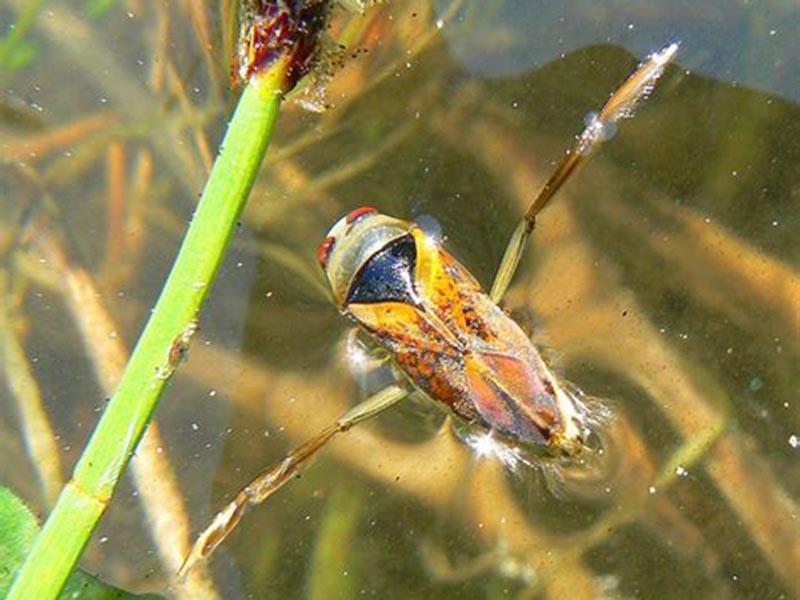
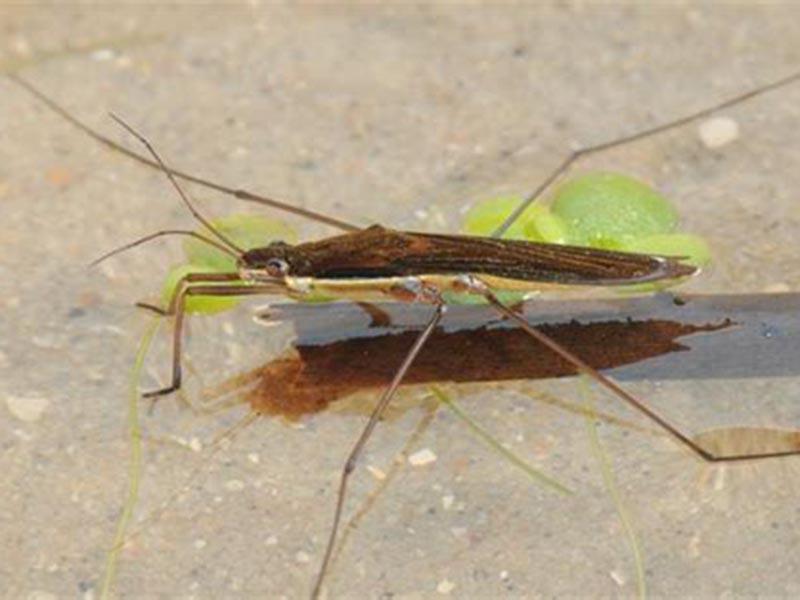
Types of water bugs
General signs are not always enough to recognize which genus it belongs to pest. To do this, it is necessary to know the structure of each individual group of insects.
Water bug Gladysh
The pests represent a separate genus. They live in freshwater bodies of water. The midge is not a large insect, but it is a dangerous insect.
Close-up photos
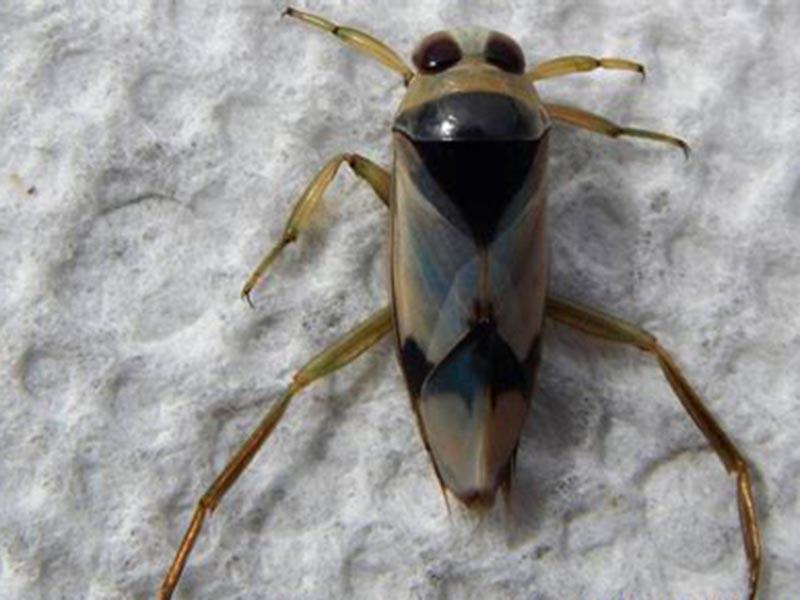
How to Recognize a Gladfish
His main characteristic is the substantial length of one pair of limbs (hind).
These legs are triceps, called rowing legs.
These paws are protected from contact with water by a large number of micro hairs. The hind limbs are more powerful and thicker. If in the water the insect feels free (controls the body due to its long legs), on land it is difficult to move using only 2 pairs of front legs.
The body of sexually mature specimens reaches 15 mm. The insects have eyes (large, red). The elytra can be seen on top of the body. The proboscis of the mouthparts is pressed against the abdomen. The bug adapts to environmental conditions - it changes its coloration accordingly with changes in the shade of the bottom of a body of water.

Features of behavior
This pest spends most of its life in water. It pushes off with its powerful hind legs. The insect swims on its back. This allows it to remain unnoticed, pretending to be an inanimate object (a leaf). The rear part of the body is elevated above the water surface, allowing the insect to breathe (the tracheal tube is located there). Predator is not afraid of anyoneas he himself attacks larger creatures.
He can easily take off, but he uses this opportunity when he is going to winter, looking for new places of residence.
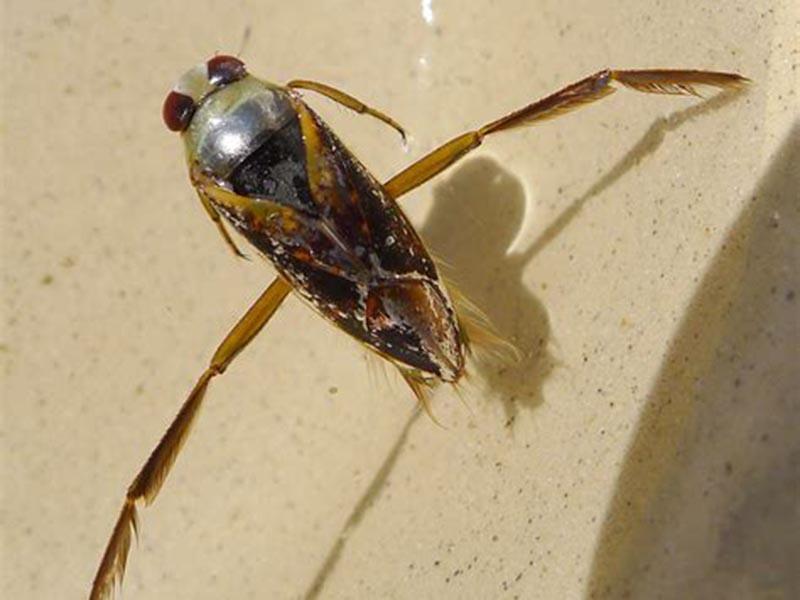
Insect habitats
The bug always lives in bodies of water where the water is fresh (e.g., when the current is very weak). It prefers to wait for its prey on the surface. The insect is notable for its low weight, with many hairs on its hind limbs that prevent it from sinking into water. Because of this, it is difficult for bed bugs of this species to stay under water. At depth they can stay no longer than 7-8 minutes. Then they resurface. This is also due to the peculiarities of the respiratory system.
Wintering bedbug outside the water body, looking for places under moss, tree bark, and leaf litter.
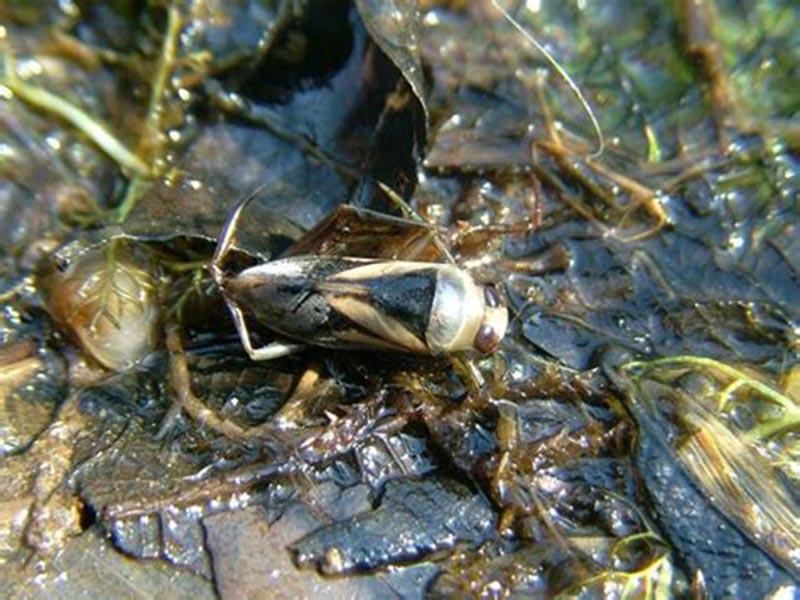
Food habits of the water bug
The gladysh bug is a predator. It most often attacks other insects, and sometimes other bed bugs, even its own brethren (cannibalism).
But gladys also eat fish (their fry).
The offspring of the gladysh
Larvae begin to feed shortly after emerging from eggs, which the female usually leaves in aquatic vegetation. The young have no wings yet and are unable to reproduce. Their body size is much smaller than that of adults. Otherwise, they look like sexually mature specimens.
Danger to humans
The water bug is not a parasite. It does not feed on the blood of the victim, but differs in external digestion (it injects enzymes into the body of the victim, this leads to a change in the structure of tissues, they gradually liquefy). So, on purpose, such a pest will not attack large warm-blooded creatures, including man.
But this does not mean that it is completely harmless.

Does the bedbug bite a man
It happens if you behave carelessly. In case of danger, the gladish always attacks. And bite causes great discomfort. Because of this, it is called the "water wasp.
The Role of Gladys in Nature
The main function of such individuals is to control the number of mosquitoes.
These predators feed on parasite larvae. They are part of the food chain, which means that they do not need to be destroyed on purpose. They cause damage when they enter fish farms, where they can cause serious damage by destroying fish fry in large numbers.
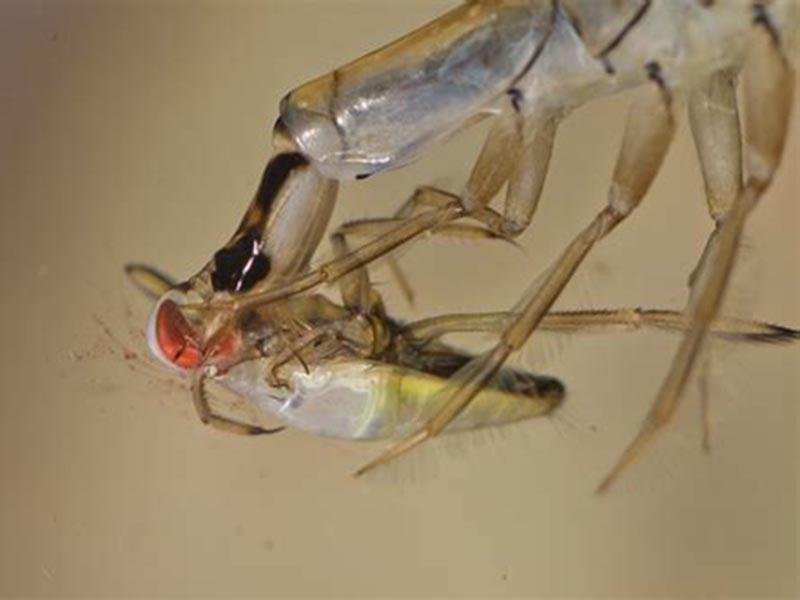
Interesting Facts about Gladys
A bed bug is not a bug, although it may be mistaken for such an insect. Other features:
- A human bite is painful not because of damage to the epidermis, but because of the introduction of a special substance into the tissues;
- males have a peculiar musical ability: they make noisesThe first one is a grasshopper, for which they move their proboscis with their paws;
- When larvae molt (shed their shells, which have become small for them), the old shell resembles a living insect - it repeats its contours and retains its shape well.
Water bug Rattlesnake Streaky
It belongs to the family of the paddlers. The thal length of these individuals barely reaches 8 mm. Insects are distinguished by long forelimbs, which help to row. The legs are covered with many hairs. The main feature of such a paddler is the stroked outer covers, which determined the name of the species.
Bed bugs are thought to have no tendrils (because they are too short), they are not visible.
Close-up photo of the rower
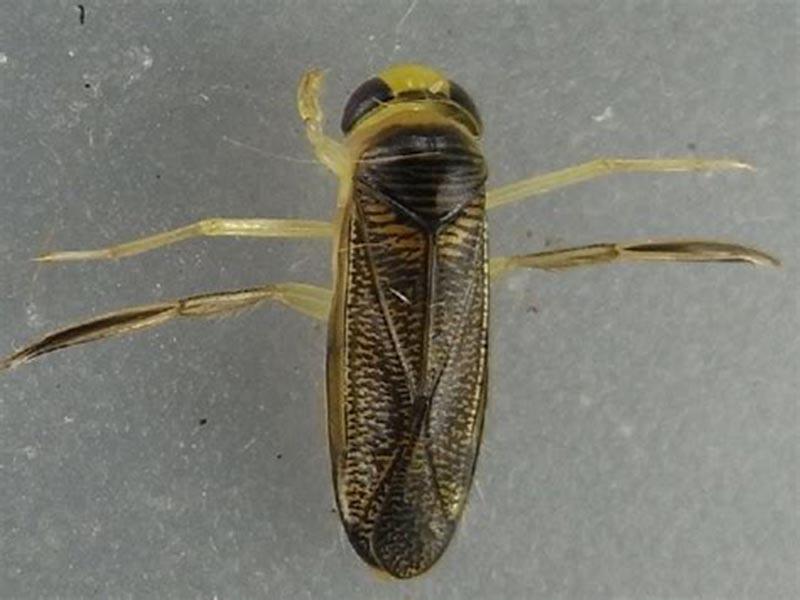
Waterbug
These are the big InsectsBut it is not the size of the body (it is just small), but the length of the limbs - several times longer than the torso that makes them such.
Waterflies are characterized by their brown coloration, which allows them to remain invisible in the water.
They spend most of their time on the surface of water bodies. This is facilitated by the structure of their limbs (the legs have many hairs impregnated with a waxy substance), as well as by the phenomenon of surface tension. The body length can reach 30 mm, which depends on the species. The waterfowl does not swim, but pushes off with its thin limbs.
Close-up photo of the Water Bugs
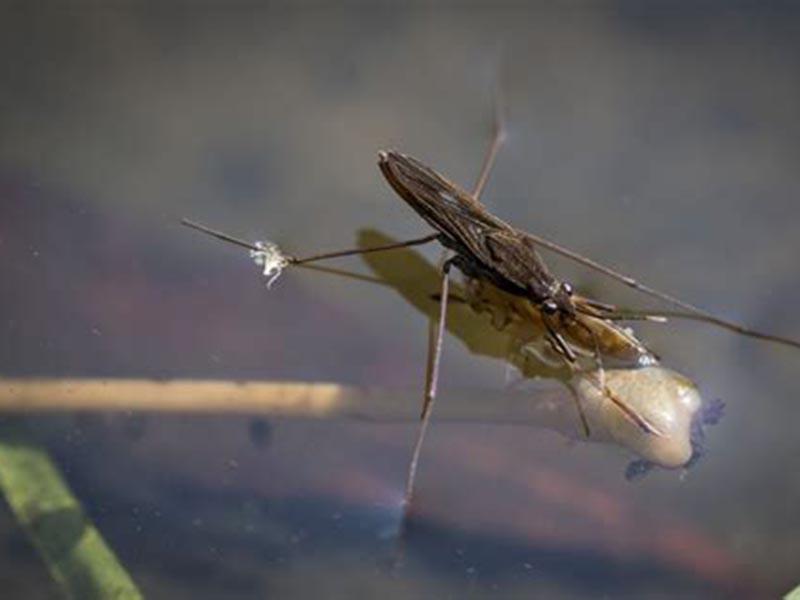
Plaut
This water bug prefers to stay under water. Its habitat is the sandy bottom of water bodies. The body shape is oval, and the body is flat on top. The length of these specimens is 8-10 mm. In addition, the insects have wings. Their length also differs depending on the type of pest. They hunt by sitting on plants.
They move by swimming or crawling on the bottom.
Photo of the bedbug Plautus

Breathing larvae
The bodies of the young are still forming. They can only breathe through their outer covers. That is why the body shell is thin at this stage. The respiratory system of larvae is closed. As they develop, they turn into adults and complex spiracles are formed.
But the insects get oxygen by means of the air bubble they are in.

Water Scorpion
Externally, such individuals do resemble dangerous predators. They have grasping limbs (like claws). Water bugs are characterized by their dark brown coloration; they are considered giants because their body length reaches 4.5 cm. The big spore bug breathes by means of a tracheal tube. It exhibits it above the water surface. The insects can also breathe underwater, for which they have spiracles.
The body shape of the pest is most often elongated, but varies from species to species.

Does the water scorpion bite?
Such a pest dangerous not only for its victims. It feeds on insects, small vertebrates that live underwater. This means that the water scorpion bug does not consider humans as a food source.
But with careless behavior, the pest hurts those who try to pick up the insect, or accidentally touches it.
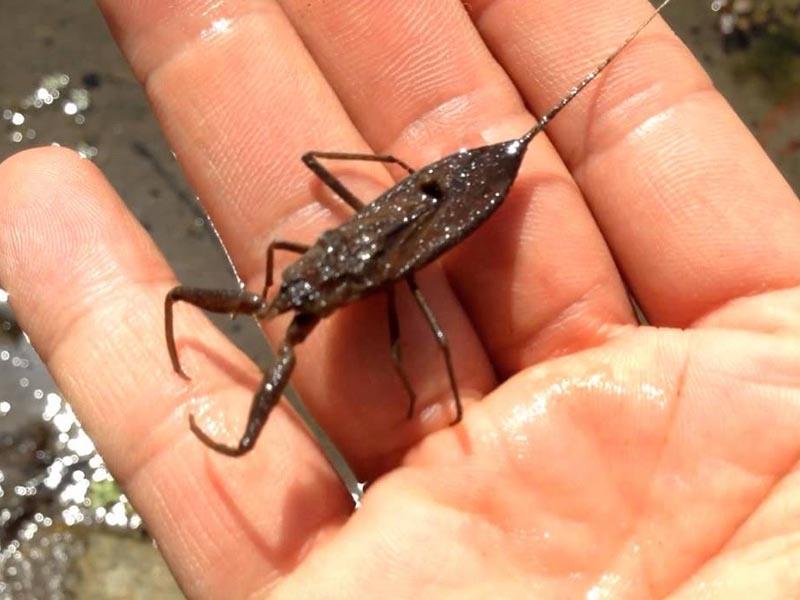
Ranatra
It is a representative of a group of individuals called "water scorpions". The insect is inconspicuous because it is characterized by a small body width. It has grippers on its front limbs. Ranatra resembles a wand scorpion, but lives under water. Its body length reaches 44 mm. The body is colored yellowish-gray. The lifestyle of the pest is similar to that of other species.
Ranatra feels at ease in reservoirs with standing water.
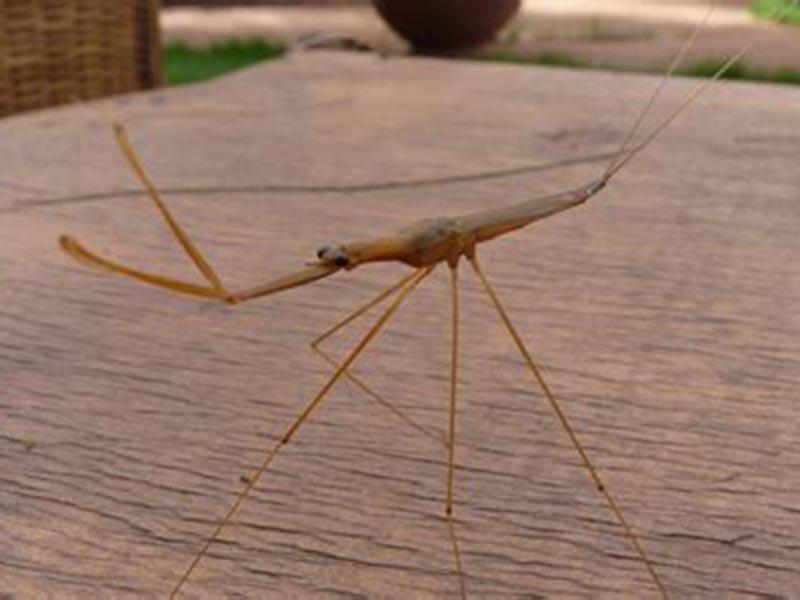
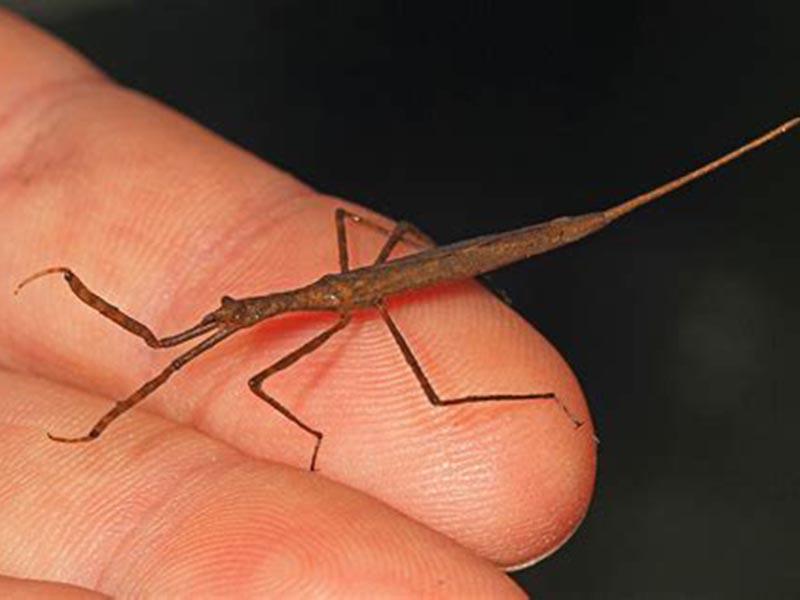
The white stink bug is a giant water bug
This unusual representative of the species reaches 17 cm in length. Its favorite places of existence are in bodies of water in eastern and southern Asia. The insect can stay in water for a long time, but periodically rises to the surface.
The water bug attacks small turtles (three-legged), fish, and frogs.
What it looks like. Description of the insect
The coloration is brown, the body is oval with a flattened torso, which helps males bear their young on their backs. Insects have 3 pairs of limbs (one of which is more powerful, which allows them to grasp the prey, firmly holding it). But it is not always possible to understand what a water bug looks like, because it knows how to camouflage - it changes its coloring according to the conditions of habitat.
Close-up photos of Belostoma

Giant bugs - what are they
This is the name given to representatives of different species. And all large specimens live in water bodies (some on the surface and some on the bottom). Insects differ in appearance, size and coloration. Water is not a permanent habitat for most of them. In winter, bed bugs are on dry land. Flying specimens easily find new habitats.
Many pests, which are considered giants, have wings and visual organs.
Hunting and feeding process
Giant bugs (regardless of size: those as long as 4 cm or as long as 15 cm) are predators. They feed on insects they can catch, but most often they prey on turtles, frogs, and offspring of fish. The largest water bug preys on prey of appropriate size. These individuals have external digestion, they suck out the nutrient juice, pre-injecting an enzyme that liquefies tissue.
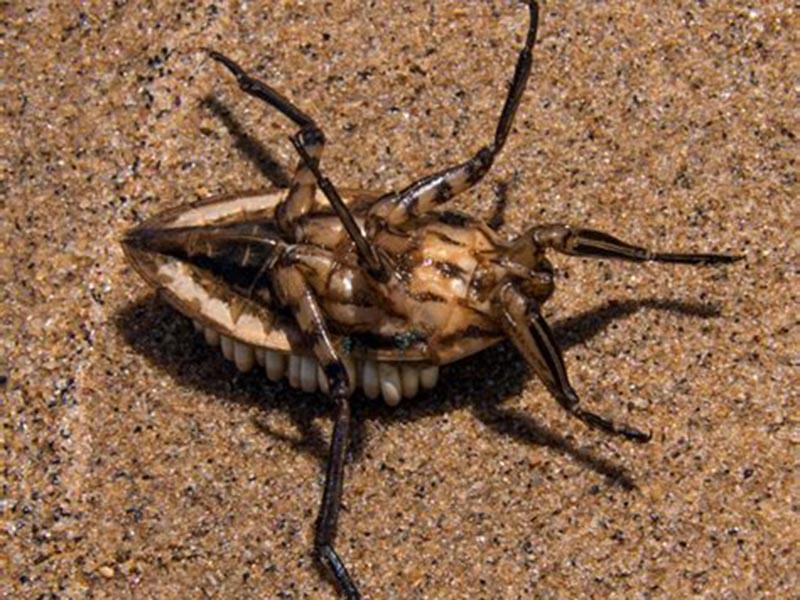
Breeding
Insects large size leave their offspring on aquatic plants. Representatives of one species use males for this purpose (their flat back). The egg is small (1-1.5 mm) and dark in color. When larvae emerge from their shells, they soon begin to feed - they also learn to hunt.
The young need energy and nutrients to develop.
Harm and benefits of giant water bugs
Representatives of all species of such insects have two functions:
- contribute to pest population control;
- destroy dead insects, sucking the juices out of them as if they were alive.
But some species cause harm, for example, if they are keen on destroying rare creatures (certain species of fish). Killer bugs can be dangerous when they find themselves in a swimming pool. Such individuals are found here, too (they feed on insects that fly low or fall into the water). They can bite people.
Lifestyle and habitat of water bugs
Conditions in water bodies of different species (lakes, rivers, streams, springs, seas, pools) are habitual for pests. These individuals are able to fly, so they deliberately choose their habitat. They live there till the first frosts. Then they fly away in search of a shelter for winter. During this period, bed bugs are inactive, falling into a state similar to hibernation.
After awakening (in spring), preparations for mating begin (insects are actively feeding, looking for partners).
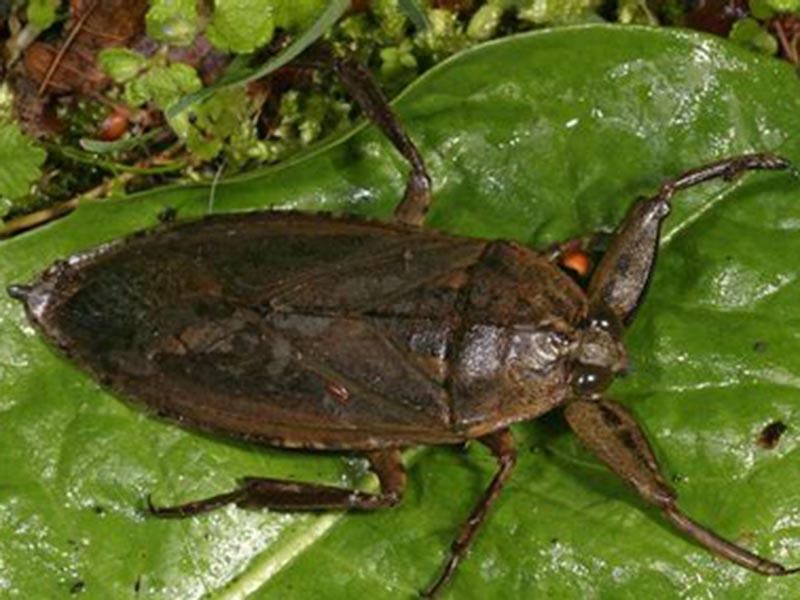
What water bugs eat
Given that such individuals are predators (regardless of size), they attack smaller creatures. These can be mosquitoes, flies, or other bed bugs. Larger members of the species prefer to feed on victims of appropriate size. All water-dwelling insects have a stabbing-sucking mouthpiece.
So they cannot physically bitebut only bury the proboscis in the tissue of the potential victim.
Reproduction of water bugs and taking care of offspring
Representatives of certain species (females) leave their offspring on the second parents, the "fathers. The males bear the eggs on themselves. In doing so, they take care that there is a supply of oxygen (bobbing in the water). They rise to the surface of the water with the eggs, which allows access to ultraviolet light, destroying germs, and warming the offspring.
Representatives of other species are less caring, but there are some among them that protect the female during the breeding season from other males.
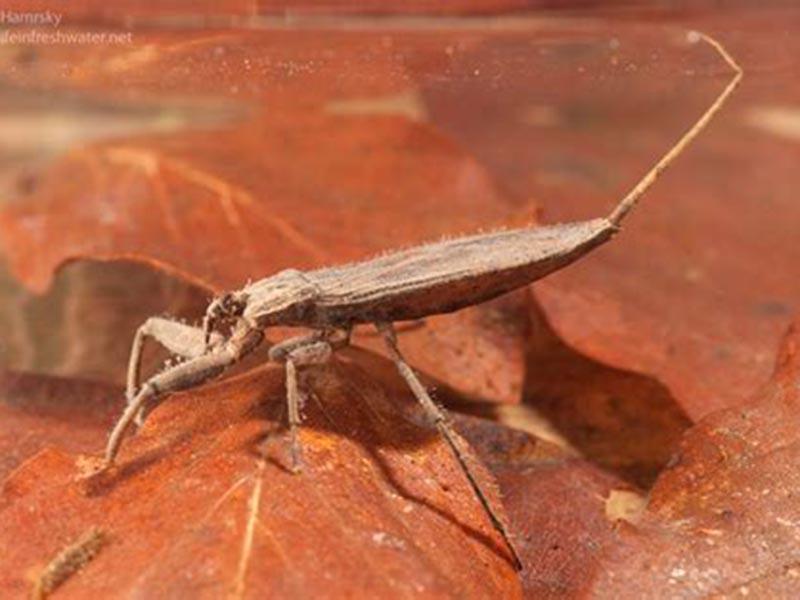
Role in nature and what water beetles are for
В нашей стране и во всем мире такие особи являются частью пищевой цепочки. Они помогают избавиться от других вредителей, сами становятся пищей для крупных рыб. Благодаря водным клопам сохраняются популяции полезных существ. Причем насекомые влияют на этот процесс не на прямую, а косвенно – убивают вредителей, сокращающих численность редких особей.
Is the water bug dangerous to humans
If you are careful when swimming in a body of water, people are not threatened by anything. Water bugs will not touch a person. This avoids a lot of unpleasantness (pain, allergies et al.).
Danger of a water bug bite and its consequences
If contact with a bedbug has already occurred (insects bite when they feel threatened), then different signs may appear:
- pain;
- itching;
- swelling;
- redness.
In some cases an allergy develops to the injected substance. This can lead to Quincke's edema, with more serious consequences (anaphylactoid reactions). If a person has a low level of sensitivity, inflammation of the affected tissues is the most serious complication.
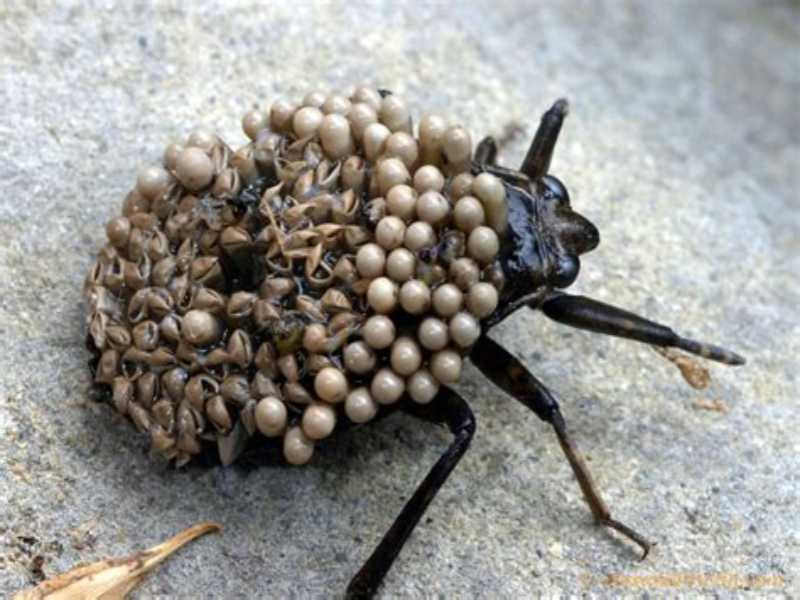
People reviews
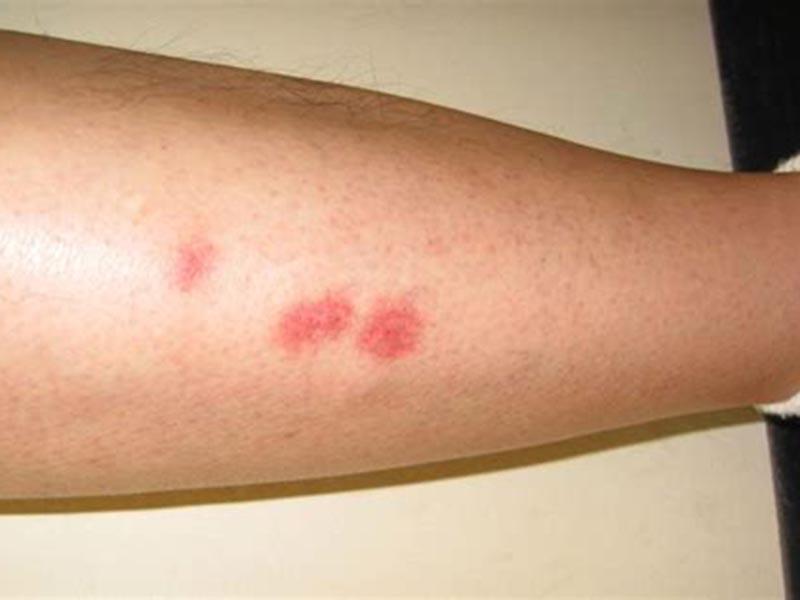
Opinions of an expert

- In winter the insects will not be disturbed, they go into diapause - a state similar to hibernation (this information for fans of dipping into the ice-hole);
- bed bugs do not always cause pain, even one individual can bite different people with different intensity, which depends on the sensitivity of the victim.
Conclusion
Water bedbugs are very different from domestic and garden and forest pests. They have a number of features that allow us to distinguish these pests from a number of different insects that live in water bodies:
- The most remarkable inhabitants of rivers, lakes, pools, ponds, and swamps are giant specimens. The body length reaches 17 cm (like the white sturgeon), but such insects are not found very often.
- Characteristic features: long limbs, with some individuals having a short body and much longer legs; dark coloration that allows them to remain unnoticed on the surface of the water surface or under water. The long legs help the pests to swim.
- Some species have aggressive behavior. They attack their victims to get food, but they can also bite humans if they get too close.
